Unspooled: My Late ADHD Diagnosis
- Lee Erickson, MA, LPCC

- Aug 12
- 4 min read
Updated: Sep 1

Unspooled: My Late Diagnosis with ADHD
By Lee Erickson
I used to think my life was proof I was broken.
Some of you who worked with me might remember the 23 coffee cups stacked in the corner of my office. Laziness.
The stacks of unpaid invoices months past due? Irresponsibility.
The way I could be bored and overwhelmed at the same time? A personal defect.
I carried those judgments for decades, an invisible anvil that weighed down every job I’d ever worked.
Then one day, in a therapy session, a client described their ADHD in a way that made my stomach knot—the racing thoughts, the disorganization, the impulsive bursts of creativity, the lack of attention to detail, and the shame that lingered afterward. I was nodding along before I realized I wasn’t just empathizing — I was recognizing myself.
That night, I started this poem. In clear ADHD fashion, it took months to finish.
Unspooled (Inattentive Type)
by Lee Erickson
23 dirty coffee cups stacked
in the corner of my office.
Some, still half full of coffee—
softening into something medicinal.
My boss took calls—
stacks of unpaid invoices,
some months old,
hundreds of thousands of dollars
owed to loyal vendors.
Me, shirking my responsibility—
unable to approve
and append.
It’s an odd feeling—
to be overwhelmed and bored
at the same time.
Unspooling—
a thread fraying beyond recognition.
The metal spike on my desk has 35
pink “While You Were Out” messages,
items needing attention.
One time I laughed so hard with Heidi—
phone pranking her sister who
returned her wedding veil to Dayton’s—
I threw my head down—
the message spike hit my skull.
Three-quarters of an inch to the right—
I’d be wearing a patch for life.
It was replaced
with another, less deadly
message holder.
Another way
others were protecting me
from myself.
The memories returned
when the client talked about her
shame,
the feelings that arise when you
carry the burden that you are
deeply flawed,
convinced every judgmental eye
is swerving your direction.
Moving apartments—
rearranging furniture,
stretching, clawing
for something to change.
My check engine light still glowing—
the slow blink of warning
I dared ignore.
The need for novelty
to invigorate
my under-stimulated wit—
no awareness
how out of control it was.
I was.
No one asked
if maybe this was something else—
not laziness,
not brokenness,
but a span of attention
in need of
untangling.
This sense of loss—
broken beyond repair—
a thread unraveled.
Even the coffee, quietly fermenting,
knew what I could not yet name—
that the shame, heavy as grounds,
would settle at the bottom,
until the next stir sent it swirling again,
ready to stain
the shape of my days,
the whole vessel of my being.
When I finally got tested, the results weren’t surprising—at least not to the part of me that had been silently struggling for decades. But they were devastating to the part of me that had believed, all this time, that the problem was me.
The diagnosis was more than a label — it was a lens. Suddenly, my life made sense:
The endless to-do lists that never got done.
The way I’d start five projects at once and finish none.
The craving for novelty that made me rearrange furniture again and again.
The struggle to see the details when the big picture felt intriguing.
The deep shame that followed, every single time.
ADHD wasn’t a character flaw. It was an operating system — one nobody had ever taught me to use. I had learned to adapt, but always under the weight of shame. Now it didn’t feel like an excuse—it felt like an explanation.
I thought back to grad school. My final counseling/psychology paper was supposed to be 75–125 pages: part research, part practicum evaluation, part vision statement. I sent sections to my advisor, but when it came to the last part, I typed the final word, converted the document to a PDF, and hit send.
I didn’t proofread. I couldn’t. Something in me refused to look at it one more time—now or never. The paper went out with spelling and grammar mistakes, which my advisor noted. But honestly, it felt like the only way I could finish.
For years, I’d lived in the shadow of you’re lazy, you’re irresponsible, you can’t focus. And yet, that same brain that left coffee cups fermenting in the corner also gave me the ability to hyperfocus in a crisis, to think in unexpected directions, to see patterns others missed. It’s made me able to connect deeply with people who feel broken and show them they’re not.
I now see ADHD as my superpower — not because it’s easy, but because it’s mine. It forces me to innovate. It fuels my creativity. It makes me empathetic in ways I never could have been otherwise.
When people ask why I was diagnosed so late — and whether ADHD is “over-diagnosed” — I tell them this: my ADHD is the inattentive kind. Hyperactive kids stand out. Inattentive kids fade into the background. We daydream. We get lost in thought. We get missed. We are harder to spot and there was not ADHD testing when I was a kid.
I also tell them I struggled with math my entire life. Numbers would slide around in my head. I thought it was proof I wasn’t smart enough. Turns out, my brain just processes information differently.
Most importantly, my diagnosis has taught me self-compassion — for myself, and for others still navigating life with brains wired like mine. I wish someone had told me sooner that ADHD can look like a messy desk, unpaid bills, and an overflowing dish bin — and that none of those things mean you’re lazy or crazy.
They mean your brain just works differently.
If you’ve lived with shame for years, wondering why you can’t just “try harder,” I hope you know this:
You are not broken. You don’t need fixing.
You’re a different kind of woven. It’s not an excuse but a reason. And once you learn your pattern, you can make something beautiful no one else could ever create.
Disclaimer: The content shared here reflects my personal thoughts and professional insights, but it is not therapy. If you are struggling or in crisis, please call 911, go to your nearest emergency room, or dial 988 in the U.S. (Suicide & Crisis Lifeline). If outside the U.S., please seek local emergency resources.





Comments